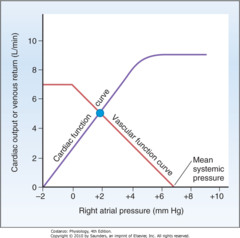Costanzo makes a point of saying that pulmonary arterial blood is "true venous blood because the coronary arteries drain into the right atrium and the blood doesn't get mixed up until it reaches the pulmonary artery".
I get that pulmonary arterial blood is mixed venous blood, but what is Costanzo getting at by emphasizing it? And what does the part about coronary artery drainage have to do with it? It's all still mixed venous blood once it enters any venous structure, right?
IVC = mixed venous blood
RA = mixed venous blood
Coronary Sinus = mixed venous blood (potentially different SaO2 than IVC because coronary utilization)
PA = mixed venous blood
I get that pulmonary arterial blood is mixed venous blood, but what is Costanzo getting at by emphasizing it? And what does the part about coronary artery drainage have to do with it? It's all still mixed venous blood once it enters any venous structure, right?
IVC = mixed venous blood
RA = mixed venous blood
Coronary Sinus = mixed venous blood (potentially different SaO2 than IVC because coronary utilization)
PA = mixed venous blood


